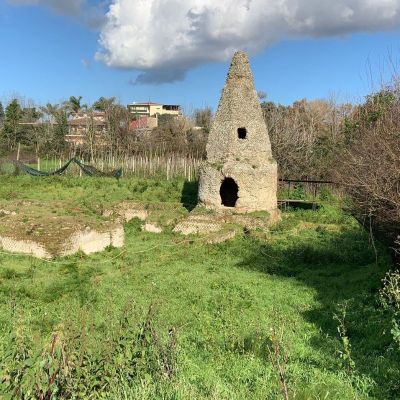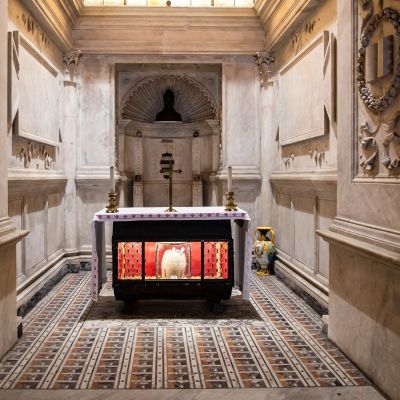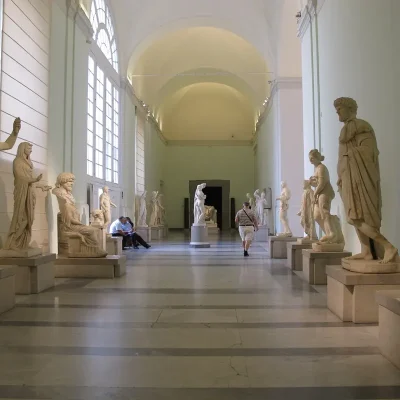In the bustling heart of Sorrento, Italy, lies a hidden gem that offers a tranquil escape from the city’s lively streets – The Cloister of San Francesco. This ancient cloister, part of a larger monastic complex that includes a church and a convent, is a perfect blend of historical significance, architectural beauty, and serene ambiance. For travelers and tourists venturing through Sorrento, a visit to this peaceful oasis is a must to experience the town’s spiritual heritage and architectural marvels.
Historical Background
Dating back to the 14th century, The Cloister of San Francesco has been a witness to centuries of history. It has undergone several transformations, reflecting the various architectural styles and cultural influences over the years. Originally built in a medieval style, it was later renovated in the 16th century, introducing elements of the Renaissance period. This fusion of styles gives the cloister its unique and enchanting character, making it a significant historical site in Sorrento.
Architectural Splendor
The Cloister of San Francesco is renowned for its distinctive architectural design. The arches, a harmonious mix of late Gothic and Renaissance styles, create an atmosphere of timeless beauty. The columns, each with different capitals, add to the cloister’s unique charm. The courtyard, surrounded by these elegant arches, is a peaceful haven, with its well-manicured garden providing a serene backdrop for quiet reflection or casual strolls.
A Venue for Culture and Art
Beyond its historical and architectural significance, The Cloister of San Francesco serves as a vibrant cultural center in Sorrento. It frequently hosts a variety of events, including art exhibitions, concerts, and weddings. The
cloister’s acoustics and picturesque setting make it an ideal venue for classical music performances, which are often held here, especially during the summer months. These events provide visitors with a unique opportunity to enjoy local and international art and music in a historically rich setting, making the cloister not just a site of historical interest but also a hub of contemporary cultural activity.

Tranquil Gardens and Artistic Inspirations
The gardens of The Cloister of San Francesco are as much a part of its allure as the architecture itself. Filled with lush greenery and blooming flowers, the gardens offer a tranquil space for visitors to unwind. Artists and photographers, in particular, will find the combination of natural beauty and architectural elegance an endless source of inspiration. The peaceful ambiance of the gardens invites visitors to relax and absorb the serene atmosphere, providing a much-needed respite from the bustling tourist spots of Sorrento.
Spiritual Connection
For those interested in the spiritual aspect, The Cloister of San Francesco remains a significant religious site. Adjacent to the cloister is the Church of San Francesco, which dates back to the 7th century. Visitors can explore the church and attend services, gaining insight into the local religious practices and traditions. The combination of the cloister and the church offers a holistic experience of Sorrento’s spiritual heritage.
Visitor Experience
Exploring The Cloister of San Francesco is a journey through time, where the past seamlessly blends with the present. The site is easily accessible from the main areas of Sorrento, making it a convenient stop for travelers. Visitors are encouraged to take their time wandering through the arches, sitting in the gardens, and possibly attending an event or exhibition if one coincides with their visit.
Guided tours are available, offering deeper insights into the cloister’s history and architecture. These tours often reveal hidden stories and facts that enrich the visitor’s understanding of the site’s significance.
Photographic Haven
For those with a keen eye for photography, the cloister offers endless opportunities to capture stunning images. The play of light and shadow through the arches, the contrasting textures of stone and greenery, and the overall peaceful ambiance make for captivating photographic subjects. Whether you are an amateur photographer or simply love to
capture memories of your travels, the cloister’s picturesque setting is sure to provide ample material for beautiful photos.
Connecting with Local Life
Visiting The Cloister of San Francesco also offers a chance to connect with the local life of Sorrento. The cloister is not just a tourist attraction but a living part of the community. Engaging with the events held here, or even just observing the locals as they go about their day in this serene environment, can provide a deeper appreciation for the town’s culture and the role this historic site plays in the everyday life of Sorrento.
Conclusion
The Cloister of San Francesco in Sorrento is more than just a historical landmark; it’s a peaceful retreat, a cultural hub, and a window into the past. Its unique blend of architectural styles, its lush gardens, and its ongoing role as a venue for cultural events make it a must-visit destination for travelers and tourists. Whether you’re seeking artistic inspiration, a quiet place to reflect, or a deeper understanding of Sorrento’s cultural heritage, the cloister offers a tranquil and enriching experience that is sure to be a highlight of any visit to Sorrento.
As you wander through its arches, relax in its gardens, or enjoy a concert under the stars, The Cloister of San Francesco provides a memorable and peaceful escape, a place where the hustle and bustle of the outside world seems to fade away, leaving only the beauty of history and the tranquility of the present.
Discover More: “Discovering Sorrento: Things to Do in One Day“
After exploring the tranquil beauty of The Cloister of San Francesco, if you’re keen to uncover more hidden gems and experiences in Sorrento, be sure to read our comprehensive guide, “Discovering Sorrento: Things to Do in One Day.” This extensive article is your perfect companion for making the most out of a day in this enchanting town.
In “Discovering Sorrento,” we delve into a curated selection of activities and sights that are ideal for a day trip. Whether you’re interested in historical sites, natural beauty, culinary delights, or shopping, our guide offers insightful recommendations to ensure your day in Sorrento is unforgettable.
From walking tours that reveal the town’s rich history to recommendations for the best local dining spots, “Discovering Sorrento” covers a range of interests and tastes. The guide also includes practical tips on navigating the town, helping you to plan your day efficiently and enjoyably.





